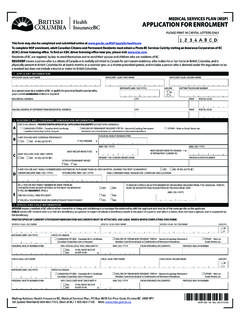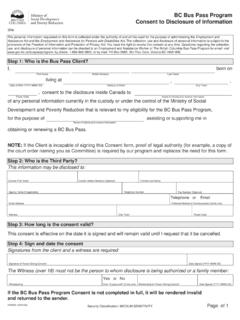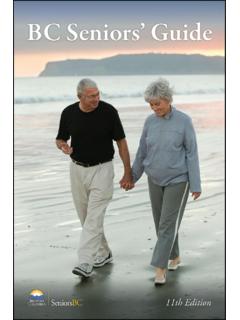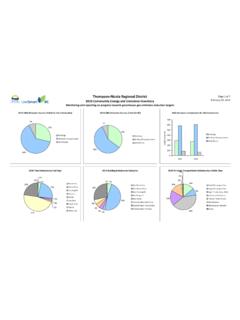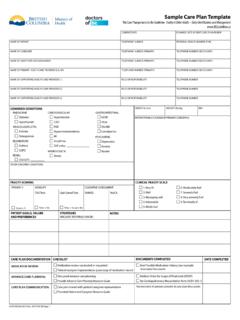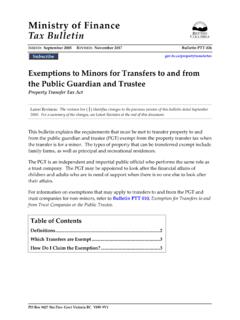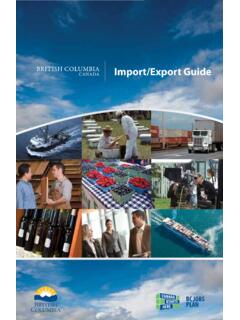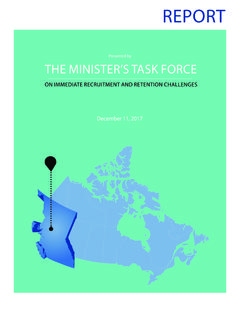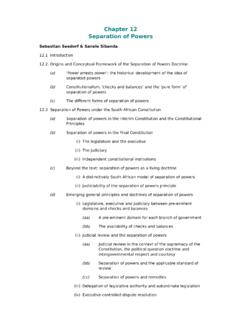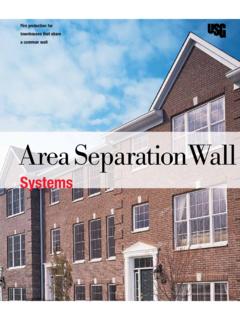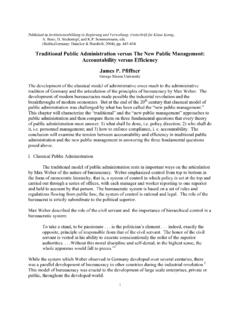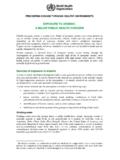Transcription of ILLUSTRATED GUIDE - British Columbia
1 ILLUSTRATED GUIDEE nergy efficiency Requirements for Houses in British ColumbiaThis GUIDE has been developed to assist builders and residentialindustry stakeholders in understanding and complying with the new requirements in Section of the British Columbia Building Zone 4 Lower Mainland and Southern Vancouver IslandForward ..3 Changes to Provincial Energy efficiency Requirements ..3 Other Useful Information ..3 Acknowledgements ..3 Disclaimer ..3 General ..4 Scope ..4 Compliance and Application ..4 Building Envelope ..5 Continuity of Insulation ..5 Thermal Characteristics of Building Assemblies ..8 Windows, Doors and Skylights ..11 Airtightness ..12 Construction of Air Barrier Details ..12 Trade-off Options for Above-ground Building Envelope Components and Assemblies.
2 17 HVAC and Service Water Heating Requirements ..18 Scope and Application ..18 Equipment and Ducts ..18 Air Intake and Outlet Dampers ..18 Piping for Heating and Cooling Systems ..19 Equipment for Heating and Air Conditioning Systems ..19 Temperature Controls ..19 Humidification ..19 Heat Recovery from Dehumidification in Spaces with an Indoor Pool or Hot Tub ..20 Heat Recovery from Ventilation Systems ..20 Space Heat and Service Water Heating Equipment efficiency ..20 Solar Thermal Systems for Space Heat and Service Water Heating ..20 Service Water Heating Piping ..20 Service Water Heating Controls ..20 Appendix 1: Section Checklist ..22 Table of ContentsForwardThis GUIDE has been developed to assist residential builders and industry stakeholders in British Columbia to interpret and comply with changes to the 2012 British Columbia Building Code ( the Code ) for energy efficiency for housing and small buildings.
3 It is one in a series of guides designed to provide information for specific climate zones in British Columbia . Changes to Provincial Energy efficiency RequirementsCommencing December 19, 2014, applications for building permits must comply with new requirements for energy efficiency in housing, small commercial and industrial buildings. The new building envelope requirements vary depending on your location. New Code requirements are also being added related to the energy efficiency of heating, ventilation and air conditioning (HVAC) equipment and service water heating (SWH). Other Useful InformationA number of documents complement this GUIDE and are recommended reading to assist builders in the design and construction of homes, including: Homeowner Protection Office (HPO)1, Building Envelope GUIDE for Houses.
4 Canadian Home Builders Association, Builders publication was developed through extensive consultation with many individuals and organizations involved in residential construction in British Columbia . The HPO gratefully acknowledges the valued contributions made by the project industry committee, including residential builders, building officials, energy advisors, warranty providers and the Building and Safety Standards Branch. This GUIDE was prepared by Innes Hood Consulting Inc. in collaboration with RDH Building Engineering Limited. Special thanks to Innes Hood, James Higgins and Graham Finch for their work on this project. DisclaimerThis GUIDE is intended to provide readers with general information about aspects of Part 9 of the British Columbia Building Code.
5 Readers are urged not to rely simply on this GUIDE , but to carefully review the Code and consult with appropriate and reputable professionals and construction specialists to assist in interpreting and applying the Code. It is the responsibility of all persons undertaking the design and construction of a house to fully comply with the requirements of the Code. The authors, contributors, funders and publishers assume no liability for the accuracy of the statements made or for any damage, loss, injury or expense that may be incurred or suffered as a result of the use of or reliance on the contents of this GUIDE . The views expressed do not necessarily represent those of individual contributors or the Homeowner Protection Office, a branch of BC Housing, or the Building and Safety Standards Zone 4: Lower Mainland and Southern Vancouver Island Urban centres in Climate Zone 4 include: Abbotsford Chilliwack Cloverdale Duncan Hope Ladner Langford Langley Maple Ridge Mission City New Westminster North Vancouver Port Renfrew Richmond Sechelt Sidney Sooke Squamish Surrey Vancouver* Victoria West Vancouver White Rock* Refer to Vancouver Building By-law for Code check with your local building official to confirm the climate zone.
6 ILLUSTRATED GUIDE - Energy efficiency Requirements for Houses in British Columbia Figure 1: British Columbia Approximate Climate Zones General ( ) This GUIDE has been developed at the request of the Building and Safety Standards Branch to assist residential builders and industry stakeholders. It focuses on the most commonly used assemblies that will meet the requirements of the Code and provide durable service. Specifically, this GUIDE :1. provides residential builders with information to assist in the interpretation of the minimum requirements of the relevant energy efficiency requirements in the Code (Section ), and2. highlights how the new Code requirements differ from existing requirements for energy efficiency .
7 Scope ( )The scope of this GUIDE is limited to single family houses. While Section does include other small residential, commercial and industrial buildings, they are not addressed in this document. This GUIDE does not apply to construction in the City of Vancouver, which is regulated under the Vancouver Building and Application ( )Buildings must comply with the prescriptive requirements of Subsections through Alternatively, buildings can be built to meet the performance compliance path requirements described in Subsection of the Code, however, the performance path is not discussed in this has six climate zones (Figure 1). The specific weather location may be determined by referencing the local authority or Appendix C of Division B in the Code.
8 This particular GUIDE provides information specific to Climate Zone Zone 4: Lower Mainland and Southern Vancouver Island Important Code Change: Thermal insulationrequirements are now defined in terms of effective insulation. Previous versions of the Code referenced nominal insulation. Important Code Change: Attached garages aretypically treated as unconditioned space, even if the garage is insulated. The assembly separating the garage from the house must be insulated and be made airtight in all and R-value Conversion R-value = x RSI Building Envelope ( ) Continuity of Insulation ( )The continuity of the effectiveness of insulation is required. This may not require continuous insulation, since the Code permits interruptions from framing and other penetrations.
9 Insulation TerminologyContinuous insulation achieves continuity but is not insulation accounts only for thermal resistance of the InsulationEffective insulation takes into account all assembly components, including framing, sheathing, cladding InsulationInsulation in the framing cavity achieves continuity of effective of Effective InsulationContinuous Insulation ILLUSTRATED GUIDE - Energy efficiency Requirements for Houses in British Columbia 6 Figure 2: Typical Problem Areas for Insulation ContinuityInsulation Continuity DetailsFoundation WallTwo Planes of InsulationInsulation separated by the foundation wall at the floor slab is not required to be continuous, provided the exterior insulation extends down to the two planes of insulation are separated by a building envelope assembly and cannot be physically joined, one of the planes of insulation must be extended to overlap four times the thickness of the locations requiring attention to detailing to provide for continuity of insulation are presented in Figure 2.
10 A checklist providing frequent locations of thermal losses and air leakage is included in the Zone 4: Lower Mainland and Southern Vancouver Island Headers and Rim JoistsElectrical PanelThe thermal bridging effect of closely spaced, repetitive structural members like studs and joists, and of ancillary members like lintels, sills and plates, must be accounted for when calculating the thermal resistance of building envelope , electrical and plumbing components placed within and parallel to an exterior wall are required to be insulated to the effective thermal resistance required for the wall at the projected area of the system to Window or Door InterfaceAttic Insulation at Outside WallsJoints and junctions between walls and other components like windows and doors need to have the same effective R-value as the lower of the adjoining components.
